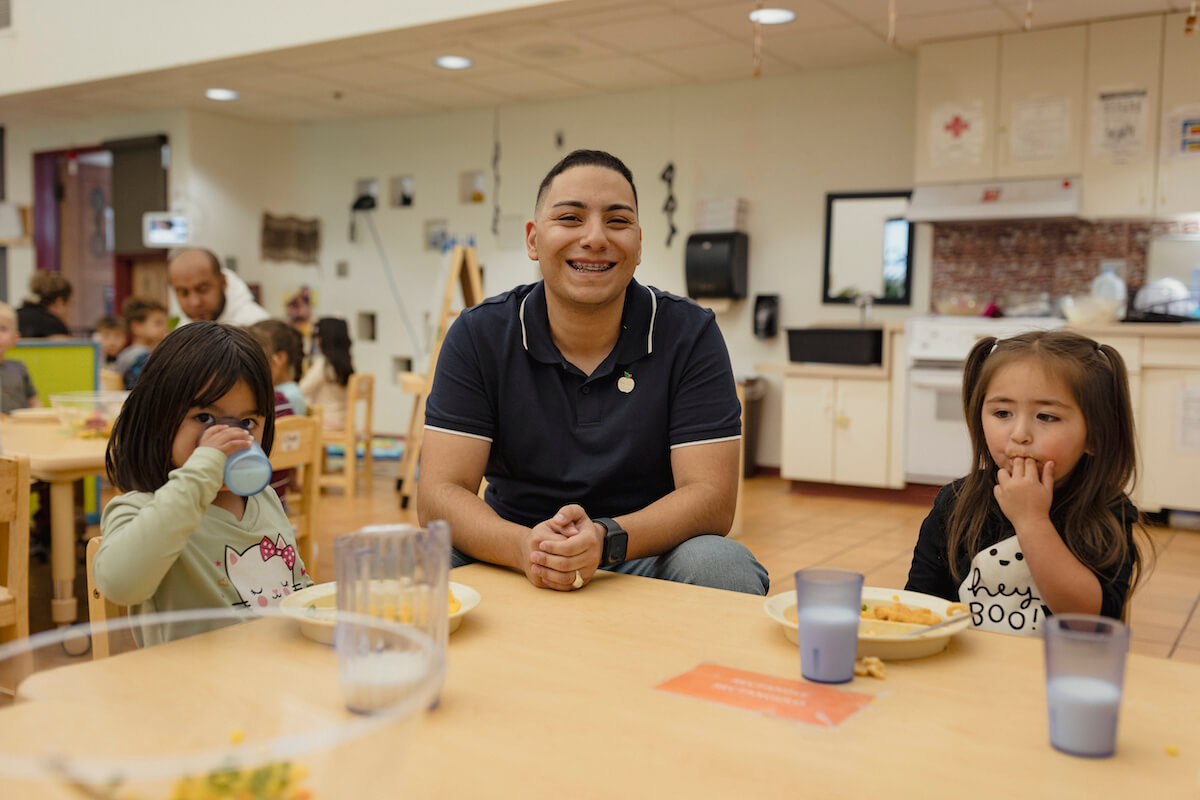Take our free quiz to get personalized early childhood career recommendations.

Planning Child Care Meals? Try These Recipes with New Mexico Foods and Flavors
A former chef offers tips for New Mexico-grown meals that meet CACFP requirements
Cooking for young kids can be challenging. Cooking for a big group of young kids, while meeting federal nutrition standards and serving local foods? It may not be easy, but there’s help! The New Mexico Early Childhood Education and Care Department (ECECD) has trainings, recipes, and a grant program for buying locally—all designed to help you serve the great food New Mexico is known for, while following the rules of the federal Child and Adult Care Food Program (CACFP).
Just what is CACFP? If your program doesn’t already participate, here’s what you need to know: Child care providers (both centers and homes) can be reimbursed for meals and snacks they serve to children in their care. The program requires some organization and planning, since meals and snacks have to meet federal nutrition guidelines, and reimbursement is based on daily logs of food served and children in attendance.
That’s where Jerome Samuel comes in. Jerome is a CACFP compliance officer, which means he checks to make sure New Mexico programs are meeting CACFP guidelines, while offering support and training. Jerome also has more than a decade of experience working in kitchens, and has developed a collection of recipes that use New Mexico-grown ingredients, comply with CACFP rules, and incorporate traditional New Mexico cooking styles. The cuisine reflects Jerome’s dual identity as both Hispanic and a member of the Pueblo of Tesuque, and he is passionate about sharing that knowledge with child care providers and the children in their care.
“It means a lot to me to be able to give back, and pass along my knowledge and experience and my care, not only care, but my passion for food and the art of cooking,” Jerome said.
OK, so what foods and techniques does Jerome recommend? First, providers should know about a program called New Mexico Grown, which reimburses child care providers for serving food grown or raised in New Mexico. These grant funds are on top of the reimbursement providers already receive through CACFP, to make it easier to serve foods that are fresh and locally in-season. You can apply for New Mexico Grown here, and explore lists of approved foods and vendors. New Mexico Grown is currently offered only to child care centers, with a pilot program underway for child care homes.
Next, you can explore Jerome’s first batch of recipes, designed to use approved New Mexico Grown foods, comply with CACFP standards, and to be delicious! Follow this link, then click on the folder that says “NM Grown” to find Jerome’s recipes as well as other resources about the program. And check back regularly! Jerome is planning to release new recipes for different seasons, and ECECD is working to add new information to the recipes, such as details about which CACFP requirements are fulfilled by each one.
Jerome’s recipes range from no-cook snacks (e.g. watermelon blueberry salad or caprese skewers) to full meals like bison ribs and ratatouille. Each recipe indicates the items that can be purchased with New Mexico Grown funds, and was developed with busy child care providers in mind. For example, the collection includes instructions for blanching vegetables, which Jerome recommends as a strategy to speed up meal prep while serving vegetables that are cooked just right. What is blanching, exactly? It’s a technique for partially cooking vegetables in advance, then putting them in ice water to halt the cooking process. When you’re ready to serve the vegetables, they’ll cook faster while keeping their flavor and texture—which could make a big difference if you’re rushing to feed hungry kids.
And will kids actually eat these local, tasty foods? Jerome said in his experience, kids will sometimes try things in their care setting that they wouldn’t try at home. It also helps to eat family style, meaning the adults eat with the children and eat the same foods (for general advice on introducing unfamiliar foods to young children, check out our interview with a New Mexico nutritionist). Jerome said introducing children to local, traditional meals and snacks can help them build healthy habits and a palate for high-quality food.
“To me, it’s amazing to see with this whole program that we’re providing good, healthy meals and produce for them to try,” Jerome said.

